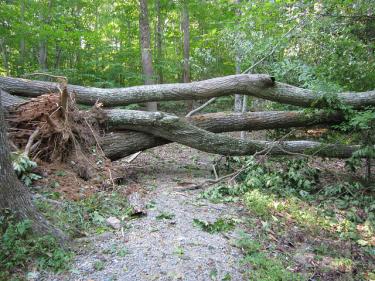How hurricanes affect your forest
High winds that topple trees and heavy rains that cause flooding are two of the major ways that hurricanes damage a forest. But there are others: the storm surges that commonly accompany hurricanes can cause additional flooding and inundate freshwater habitats, depositing salt and debris inland from the coast. Increased salt levels in soil can have long-term consequences, causing delayed mortality of some tree species, followed by forest decline and dieback. Hurricanes also spawn tornadoes—Hurricane Rita, for example, generated at least 90—which add to the destruction. High winds can also cause trees to break, twist and bend, and may cause wounds and root damage.
The most obvious and immediate effect of a hurricane is on timber, and the economic value it represents. But such severe storms also:
- Damage roads, culverts and ditches, limiting access, stream flow and drainage,
- Alter fish and wildlife habitats, creating some and destroying others,
- Change the aesthetic value of a property,
- Decrease recreational potential of a property,
- Increase the risk of wildfires due to fallen wood,
- Increase susceptibility to rot, pests and disease,
- Pose a safety hazard.
In the long-term, storm damage may also upset some of the other ecosystem services that forests deliver such as water purification and carbon storage. The latter is essential to mitigating the effects of climate change. But if downed wood can’t be harvested after a storm, the carbon stored in those trees is released as they rot, adding carbon dioxide back into the atmosphere. Researchers are working to better estimate regional carbon loss from forests and to develop management strategies to boost their carbon capture and storage capacity, as part of the long-term solution to climate change.
How can I get more tips?
It’s simple! Enter your email below.

